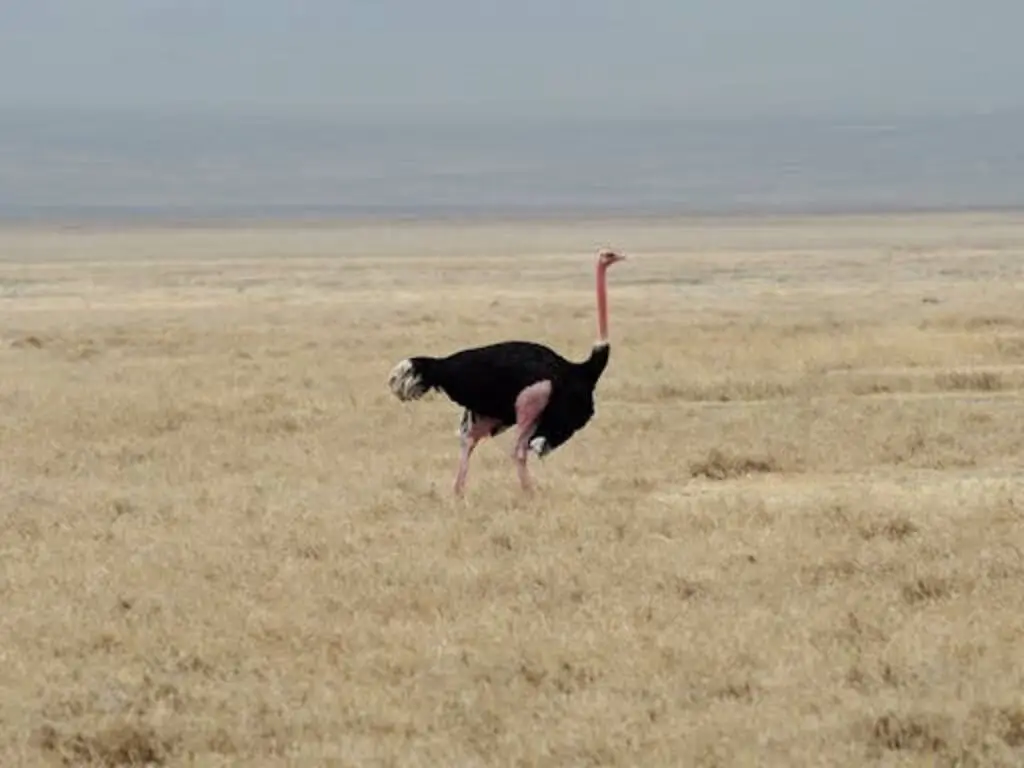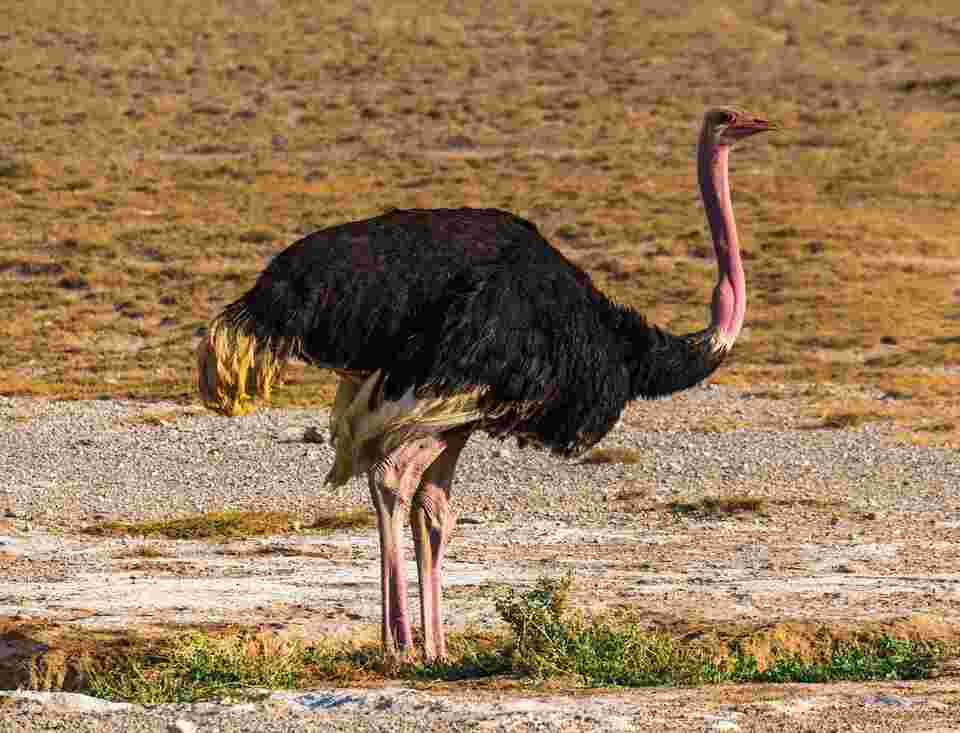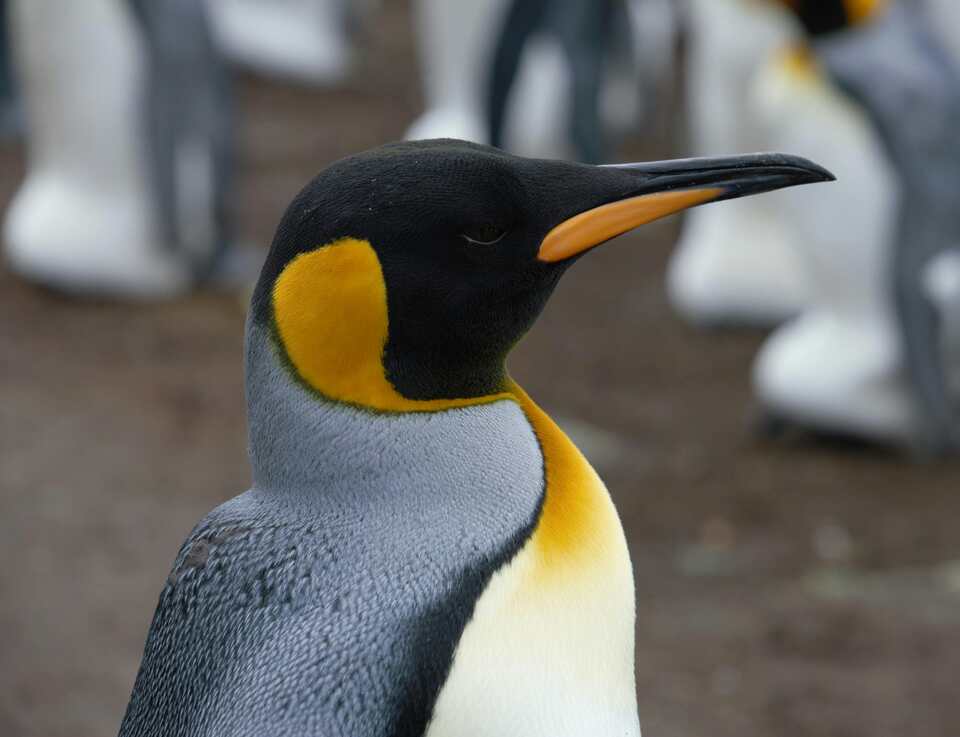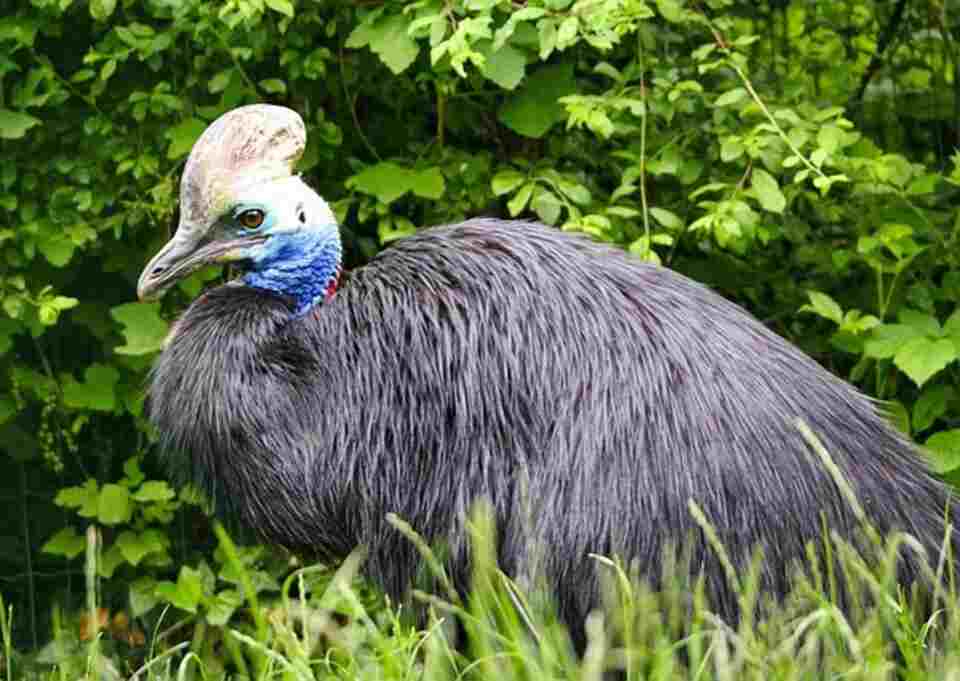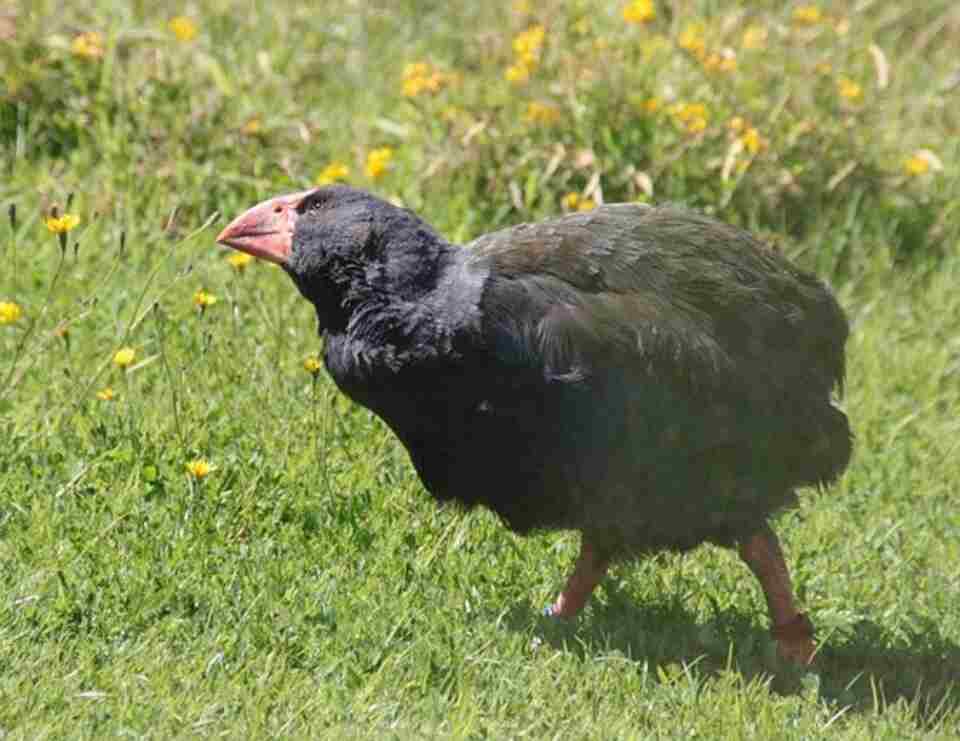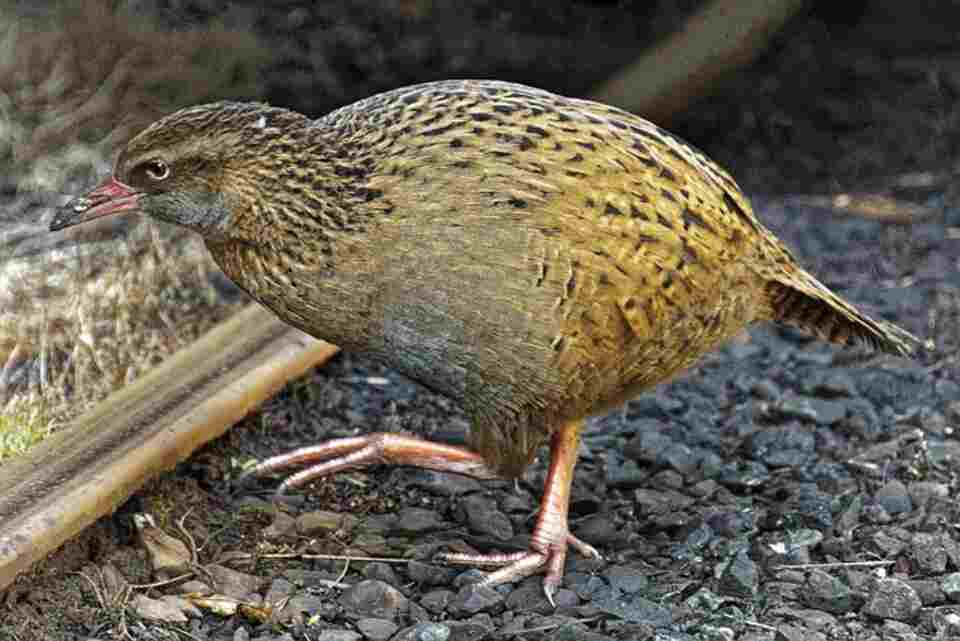When we think of birds, the image that often comes to mind is one of graceful creatures soaring through the sky. However, not all birds possess the ability to fly. In this comprehensive guide, we’ll explore eight common flightless birds, delving into their unique characteristics, habitats, and adaptations.
Whether you’re a bird enthusiast, a student of zoology, or simply curious about the diverse world of avian species, this article will provide you with in-depth knowledge about these fascinating flightless wonders.
Table of Contents
- 1 1. Ostrich (Struthio camelus)
- 2 2. Emperor Penguin (Aptenodytes forsteri)
- 3 3. Emu (Dromaius novaehollandiae)
- 4 4. Cassowary (Casuarius)
- 5 5. Steamer Duck (Tachyeres)
- 6 6. Takahe (Porphyrio hochstetteri)
- 7 7. Weka (Gallirallus australis)
- 8 8. Great Cormorant (Phalacrocorax carbo)
- 9 Comparative Analysis of Flightless Birds
- 10 Evolution and Adaptation of Flightless Birds
- 11 Conservation Challenges for Flightless Birds
- 12 The Role of Flightless Birds in Ecosystems
- 13 Flightless Birds in Culture and Mythology
- 14 Flightless Birds and Human Interaction
- 15 Future Prospects and Ongoing Research
- 16 Conclusion
- 17 Author
1. Ostrich (Struthio camelus)
The ostrich, native to Africa, is not only the largest living bird species but also one of the most well-known flightless birds. These impressive creatures have adapted to life on the ground in remarkable ways.
Physical Characteristics:
- Height: Up to 9 feet (2.7 meters)
- Weight: Up to 350 pounds (160 kilograms)
- Wingspan: Up to 6.6 feet (2 meters)
Despite their inability to fly, ostriches have developed powerful legs that allow them to run at speeds of up to 43 miles per hour (70 kilometers per hour). Their long, muscular legs are equipped with only two toes, unlike most birds which have four. This adaptation provides them with excellent balance and agility for running across the African savannas and deserts.
Ostriches have small wings relative to their body size, which they use for balance while running and during courtship displays. Their feathers, while not suitable for flight, provide insulation and play a role in temperature regulation.
Habitat and Behavior: Ostriches are found in various habitats across Africa, including savannas, grasslands, and semi-arid regions. They are highly social birds, often living in small herds led by a dominant male. During the breeding season, male ostriches perform elaborate courtship dances to attract females.
One of the most interesting behaviors of ostriches is their nesting habit. A dominant female will lay her eggs in a communal nest, which can contain up to 60 eggs from multiple females. The male takes on the primary responsibility of incubating the eggs, which takes about 42 days.
Diet and Adaptations: Ostriches are omnivores, with a diet consisting mainly of plants, but they also consume insects, small reptiles, and rodents. Their keen eyesight and long necks allow them to spot potential predators from a distance. When threatened, ostriches can use their powerful legs to deliver forceful kicks capable of seriously injuring or even killing large predators.
2. Emperor Penguin (Aptenodytes forsteri)
Emperor penguins, the largest of all penguin species, are perhaps the most iconic flightless birds associated with the icy landscapes of Antarctica.
Physical Characteristics:
- Height: Up to 4 feet (1.2 meters)
- Weight: Up to 100 pounds (45 kilograms)
- Wingspan: About 3 feet (90 centimeters)
Emperor penguins have a distinctive appearance with their black back, white front, and yellow-orange patches on their necks and heads. Their bodies are streamlined for efficient swimming, with flipper-like wings that propel them through the water at speeds of up to 12 miles per hour (19 kilometers per hour).
Habitat and Behavior: These remarkable birds are uniquely adapted to survive in one of the harshest environments on Earth. They breed on the sea ice surrounding Antarctica during the brutally cold winter months. Emperor penguins are known for their extraordinary parenting behaviors. After the female lays a single egg, the male takes on the responsibility of incubating it for about two months, balancing it on his feet and covering it with a flap of skin called a brood pouch.
During this incubation period, males fast for up to 115 days, relying on their fat reserves for sustenance. Meanwhile, the females travel up to 50 miles (80 kilometers) to reach open water, where they feed and build up their own reserves before returning to feed the newly hatched chick.
Diet and Adaptations: Emperor penguins are carnivorous, feeding primarily on fish, squid, and krill. They have several adaptations that allow them to dive to depths of up to 1,800 feet (550 meters) in search of food:
- Solid bones: Unlike most birds, penguins have solid bones, which help them withstand the pressure of deep dives.
- Myoglobin-rich muscles: This oxygen-binding protein allows them to store oxygen for long dives.
- Ability to slow heart rate: This conserves oxygen during dives.
To survive the extreme cold, emperor penguins have several layers of scale-like feathers that provide excellent insulation. They also engage in huddling behavior, where large groups of penguins crowd together to share body heat and shelter each other from the wind.
3. Emu (Dromaius novaehollandiae)
The emu, native to Australia, is the second-largest living bird species after the ostrich and another well-known flightless bird.
Physical Characteristics:
- Height: Up to 6.2 feet (1.9 meters)
- Weight: Up to 132 pounds (60 kilograms)
- Wingspan: About 20 inches (50 centimeters)
Emus have long necks and legs, and their bodies are covered in shaggy, brown feathers. They have small wings relative to their body size, which they use for cooling in hot weather and for balance while running.
Habitat and Behavior: Emus are found across most of mainland Australia, inhabiting a variety of environments including forests, woodlands, and grasslands. They are excellent runners, capable of reaching speeds up to 31 miles per hour (50 kilometers per hour).
Interestingly, male emus take on the primary parenting role. After the female lays a clutch of dark green eggs, the male incubates them for about eight weeks. During this time, he doesn’t eat, drink, or defecate, losing up to a third of his body weight.
Diet and Adaptations: Emus are omnivores, feeding on a variety of plants and insects. They play an important role in seed dispersal for many Australian plants. Some notable adaptations of emus include:
- Powerful legs: Emus can deliver powerful kicks to defend themselves against predators.
- Efficient digestive system: Emus have a specialized digestive system that allows them to extract maximum nutrients from their food.
- Drought tolerance: Emus can go for long periods without water, an adaptation to Australia’s often harsh climate.
4. Cassowary (Casuarius)
The cassowary, found in the tropical forests of New Guinea and northeastern Australia, is often considered one of the most dangerous birds in the world due to its powerful legs and sharp claws.
Physical Characteristics:
- Height: Up to 5.6 feet (1.7 meters)
- Weight: Up to 130 pounds (59 kilograms)
- Distinctive feature: Large casque (helmet) on head
Cassowaries are known for their vivid blue head and neck, red wattles, and the prominent casque on top of their head. Their bodies are covered in black, hair-like feathers.
Habitat and Behavior: Cassowaries are solitary birds that inhabit dense tropical rainforests. They are generally shy and prefer to avoid human contact. However, when threatened, they can become aggressive and are capable of inflicting serious injuries with their powerful legs and dagger-like claws.
Like emus, male cassowaries are responsible for incubating the eggs and caring for the young. They can incubate up to four eggs at a time, which take about 50 days to hatch.
Diet and Adaptations: Cassowaries are primarily frugivores, with fruits making up the majority of their diet. They play a crucial role in seed dispersal in their forest habitats. Some of their unique adaptations include:
- Casque: The purpose of the casque is not fully understood, but it may play a role in amplifying low-frequency sounds or serve as a protective structure.
- Powerful legs: Cassowaries can jump up to 5 feet (1.5 meters) high and are excellent swimmers.
- Digestive system: They have a short digestive tract that allows seeds to pass through quickly, aiding in seed dispersal.
5. Steamer Duck (Tachyeres)
Steamer ducks are a genus of ducks found in South America, with three of the four species being flightless.
Physical Characteristics:
- Length: Up to 33 inches (84 centimeters)
- Weight: Up to 15 pounds (7 kilograms)
- Distinctive feature: Tiny wings relative to body size
Steamer ducks get their name from their habit of running across the water surface with their wings, reminiscent of old steamboats. The flightless species have particularly small wings in relation to their body size.
Habitat and Behavior: Flightless steamer ducks are found along the coasts of southern South America, particularly in Chile and Argentina. They are highly territorial and known for their aggressive behavior, often engaging in fierce battles with other ducks.
Diet and Adaptations: Steamer ducks feed on mollusks and crustaceans, which they obtain by diving. Their adaptations include:
- Strong bill: Used for crushing shellfish
- Powerful legs: Adapted for swimming and running on water
- Robust body: Helps them withstand the cold waters of their habitat
6. Takahe (Porphyrio hochstetteri)
The takahe is a flightless rail native to New Zealand, once thought to be extinct until its rediscovery in 1948.
Physical Characteristics:
- Length: Up to 25 inches (63 centimeters)
- Weight: Up to 7.7 pounds (3.5 kilograms)
- Distinctive feature: Large, red beak and feet
Takahe have beautiful blue-purple plumage and a large, red beak. Their strong legs and feet are adapted for walking and climbing in their mountainous habitat.
Habitat and Behavior: Originally found throughout New Zealand, takahe are now limited to a few managed sanctuaries. They form monogamous pairs and are known for their loud, distinctive call used for territorial defense and pair bonding.
Diet and Adaptations: Takahe are herbivores, primarily feeding on grass stems and seeds. Their adaptations include:
- Strong beak: Used for stripping grass leaves
- Specialized digestive system: Allows them to extract nutrients from tough plant material
- Low metabolic rate: Helps them survive in harsh alpine environments
7. Weka (Gallirallus australis)
The weka is a flightless rail native to New Zealand, known for its bold and curious nature.
Physical Characteristics:
- Length: Up to 21 inches (53 centimeters)
- Weight: Up to 3.3 pounds (1.5 kilograms)
- Distinctive feature: Strong legs and feet
Wekas have brown feathers and a sturdy beak. Their wings are small and useless for flight, but their strong legs make them excellent runners.
Habitat and Behavior: Wekas inhabit a variety of environments in New Zealand, from forests to coastal areas. They are notorious for their inquisitive and sometimes mischievous behavior, often stealing small items from campsites.
Diet and Adaptations: Wekas are omnivores, feeding on a wide variety of plant and animal matter. Their adaptations include:
- Opportunistic feeding behavior: Allows them to survive in various habitats
- Strong legs and feet: Adapted for foraging and running
- Vocal communication: Used for territorial defense and pair bonding
8. Great Cormorant (Phalacrocorax carbo)
While not completely flightless, the great cormorant is worth mentioning due to its limited flying ability and its adaptation to an aquatic lifestyle.
Physical Characteristics:
- Length: Up to 39 inches (100 centimeters)
- Wingspan: Up to 63 inches (160 centimeters)
- Distinctive feature: Hooked beak and webbed feet
Great cormorants have dark plumage, a long neck, and a hooked beak perfect for catching fish. Their wings are adapted for swimming underwater rather than sustained flight.
Habitat and Behavior: Great cormorants are found near coastal areas and inland waters across Europe, Asia, Africa, and North America. They are excellent swimmers and divers, often seen perched with wings spread to dry after diving.
Diet and Adaptations:
Great cormorants are primarily piscivorous, feeding mainly on fish. Their adaptations include:
- Webbed feet: Excellent for propulsion underwater
- Water-resistant feathers: Allow them to dive and swim efficiently
- Flexible neck: Helps in catching fish underwater
While great cormorants can fly, their flight is often labored and requires a running start across the water surface. Their limited flying ability, combined with their excellent swimming and diving skills, makes them an interesting case study in the spectrum of avian flight capabilities.
Comparative Analysis of Flightless Birds
To better understand the similarities and differences among these flightless birds, let’s compare some key characteristics:
Here’s the revised table with the corrected species names and their relevant details:
| Species | Size (Length) | Weight | Habitat | Diet | Unique Adaptation |
|---|---|---|---|---|---|
| Ostrich | Up to 9 ft | Up to 350 lbs | African savannas | Omnivore | Powerful running legs |
| Emperor Penguin | Up to 4 ft | Up to 100 lbs | Antarctic ice | Carnivore | Extreme cold resistance |
| Emu | Up to 6.2 ft | Up to 132 lbs | Australian grasslands | Omnivore | Efficient digestive system |
| Cassowary | Up to 5.6 ft | Up to 130 lbs | Tropical forests | Frugivore | Casque on head |
| Steamer Duck | Up to 33 in | Up to 15 lbs | South American coasts | Carnivore | Strong bill for crushing shellfish |
| Takahe | Up to 25 in | Up to 7.7 lbs | New Zealand grasslands | Herbivore | Low metabolic rate |
| Weka | Up to 21 in | Up to 3.3 lbs | Various NZ habitats | Omnivore | Opportunistic feeding behavior |
| Great Cormorant | Up to 39 in | 4-11 lbs | Coastal and inland waters | Piscivore | Water-resistant feathers |
Evolution and Adaptation of Flightless Birds
The evolution of flightlessness in birds is a fascinating topic that provides insights into the processes of natural selection and adaptation. Flightlessness has evolved independently in multiple bird lineages, often in response to similar environmental pressures.
Reasons for Flightlessness:
- Absence of Predators: Many flightless birds, such as the kiwi and kakapo, evolved on islands with few or no mammalian predators. In these environments, the ability to fly became less crucial for survival.
- Abundant Food Sources: In environments with plentiful ground-based food sources, the energy-intensive ability to fly may have become less advantageous.
- Energy Conservation: Flightlessness can be an adaptation to conserve energy, particularly in harsh environments like the Antarctic (emperor penguins) or hot, arid regions (ostriches).
- Niche Specialization: Some birds, like the steamer duck, have adapted to specific ecological niches where flying is less important than other abilities, such as swimming or diving.
Evolutionary Trade-offs:
The loss of flight in these birds has been accompanied by various anatomical and physiological changes:
- Reduced Wing Size: Most flightless birds have significantly smaller wings relative to their body size compared to flying birds.
- Increased Body Size: Many flightless birds, like the ostrich and emu, have evolved to be much larger than their flying relatives. Larger size can be advantageous for thermoregulation and predator defense.
- Loss of Keel: The keel, a bone extension of the sternum that anchors flight muscles in flying birds, is reduced or absent in many flightless species.
- Denser Bones: Unlike the hollow bones of most birds, some flightless birds have evolved denser bones, which can provide more strength for running or diving.
- Specialized Legs: Many flightless birds have developed powerful legs adapted for running (ostrich, emu) or swimming (penguins).
Conservation Challenges for Flightless Birds
Many flightless bird species face significant conservation challenges. Their inability to fly makes them particularly vulnerable to introduced predators and habitat loss. Here are some key issues:
- Predation: Introduced mammalian predators, such as cats, rats, and stoats, have had devastating effects on populations of flightless birds, especially on islands where these birds evolved without natural defenses against such predators.
- Habitat Loss: As flightless birds often have limited ranges, habitat destruction can have severe impacts on their populations. For example, the clearing of forests in New Zealand has significantly reduced the available habitat for kiwis and kakapos.
- Human Hunting: Historically, human hunting has led to the extinction of several flightless bird species, such as the dodo and the great auk.
- Climate Change: Changes in temperature and precipitation patterns can affect the habitats and food sources of flightless birds. For instance, rising sea levels threaten the coastal habitats of some penguin species.
- Limited Genetic Diversity: Many flightless bird species have gone through population bottlenecks, resulting in reduced genetic diversity, which can make them more vulnerable to diseases and environmental changes.
Conservation Efforts:
Numerous conservation programs are in place to protect flightless bird species:
- Predator Control: In New Zealand, extensive efforts are made to control introduced predators in areas where kiwis, kakapos, and takahes live.
- Captive Breeding: Programs for species like the kakapo have been crucial in boosting population numbers.
- Habitat Protection: Establishment of protected areas and restoration of habitats are key strategies for many flightless bird species.
- Translocation: Moving birds to predator-free islands or protected mainland sites has been successful for some species.
- Public Education: Raising awareness about the unique value and vulnerability of flightless birds is crucial for garnering public support for conservation efforts.
The Role of Flightless Birds in Ecosystems
Flightless birds, despite their inability to fly, play crucial roles in their respective ecosystems. Their unique adaptations and behaviors contribute to the health and balance of their habitats in various ways:
- Seed Dispersal: Many flightless birds, such as the cassowary and the emu, are important seed dispersers. They consume fruits and excrete the seeds intact, often far from the parent plant. This process is crucial for maintaining plant diversity and forest regeneration.
- Soil Turnover: Birds like kiwis and wekas, which forage on the forest floor, contribute to soil turnover as they search for invertebrates. This activity helps to aerate the soil and distribute nutrients.
- Predator-Prey Relationships: Flightless birds are both predators and prey in their ecosystems. For example, penguins are important predators in marine ecosystems, helping to regulate fish populations. Conversely, adult ostriches have few natural predators, but their eggs and chicks are food sources for various animals.
- Nutrient Cycling: In coastal and marine ecosystems, seabirds like penguins play a significant role in nutrient cycling. Their guano (excrement) is rich in nitrogen and phosphorus, fertilizing both terrestrial and marine environments.
- Ecosystem Engineers: Some flightless birds modify their environments in ways that affect other species. For instance, the foraging behavior of larger species like cassowaries can create small clearings in the forest, altering light conditions and potentially influencing plant growth patterns.
Understanding these ecological roles underscores the importance of conserving flightless bird species, as their loss could have far-reaching consequences for entire ecosystems.
Flightless Birds in Culture and Mythology
Flightless birds have captured human imagination for centuries, featuring prominently in the cultures and mythologies of many societies:
- Ostrich: In ancient Egypt, ostrich feathers symbolized truth and justice. The goddess Ma’at was often depicted wearing an ostrich feather. In some African cultures, ostriches are associated with the sun and considered symbols of speed and grace.
- Emu: In Australian Aboriginal mythology, the emu plays a significant role. Some creation stories describe the emu as a creator being, while others associate it with the formation of mountains and valleys.
- Kiwi: The kiwi bird is a national symbol of New Zealand, featured on the country’s coat of arms and currency. It’s deeply ingrained in New Zealand’s cultural identity, with New Zealanders often referring to themselves as “Kiwis.”
- Penguin: While not heavily featured in ancient mythologies due to their limited range, penguins have become popular figures in modern culture. They often symbolize determination, adaptability, and community in contemporary narratives.
- Dodo: Although extinct, the dodo bird has become a cultural icon, often used as a symbol of obsolescence or extinction. The phrase “dead as a dodo” has entered common language to describe something that’s unquestionably finished or obsolete.
These cultural associations highlight the impact flightless birds have had on human societies, often extending beyond their ecological importance to influence art, literature, and national identities.
Flightless Birds and Human Interaction
The relationship between humans and flightless birds has been complex and multifaceted throughout history:
- Domestication Attempts: While not as widely domesticated as some flying birds, there have been efforts to farm certain flightless birds. Ostriches, for example, are farmed for their meat, eggs, and leather in several countries.
- Ecotourism: Flightless birds, particularly penguins and kiwis, are major attractions in ecotourism. This has both positive and negative impacts – while it can raise awareness and fund conservation efforts, it can also disturb natural habitats if not managed properly.
- Scientific Research: Flightless birds have been subjects of extensive scientific research, providing insights into evolution, adaptation, and animal behavior. The study of these birds has contributed significantly to our understanding of evolutionary processes and island biogeography.
- Conservation Challenges: Human activities have posed significant threats to many flightless bird species. Habitat destruction, introduced predators, and historical hunting have led to the extinction of some species (like the dodo) and endangered many others.
- Cultural Significance: As mentioned earlier, many flightless birds hold important places in various cultures, influencing art, literature, and national identities.
Understanding these interactions is crucial for developing effective conservation strategies that consider both the needs of the birds and the human communities that share their habitats.
Future Prospects and Ongoing Research
The field of flightless bird research continues to evolve, with new discoveries and conservation techniques emerging:
- Genetic Studies: Advanced genetic techniques are providing new insights into the evolutionary history of flightless birds and helping to guide conservation efforts. For example, genetic studies have revealed that kiwis are more closely related to extinct elephant birds of Madagascar than to their New Zealand neighbors, the moa.
- Climate Change Impact: Researchers are studying how climate change might affect flightless bird populations. This is particularly crucial for species like penguins, whose habitats are directly threatened by warming temperatures and changing sea ice patterns.
- Conservation Technology: New technologies are being employed in conservation efforts. For instance, GPS tracking devices are used to monitor the movements of some flightless birds, providing valuable data for habitat protection and predator control strategies.
- Rewilding Projects: There are ongoing efforts to reintroduce flightless birds to areas where they’ve become extinct. The Takahe, once thought to be extinct, has been successfully reintroduced to several predator-free islands in New Zealand.
- De-extinction Debates: With advancements in genetic technology, there have been discussions about the possibility of “de-extinction” – bringing back extinct species through cloning or genetic engineering. While still largely theoretical, extinct flightless birds like the dodo or the great auk are often mentioned in these debates.
As research continues, our understanding of flightless birds and our ability to protect them will undoubtedly grow. However, the most effective conservation strategies will likely continue to rely on a combination of scientific knowledge, technological innovation, and community engagement.
Conclusion
Flightless birds represent a fascinating example of evolutionary adaptation. From the towering ostrich of African savannas to the nocturnal kiwi of New Zealand forests, these birds have developed unique characteristics that allow them to thrive in their specific environments without the need for flight.
The diversity among flightless birds is remarkable, showcasing nature’s ability to find multiple solutions to similar challenges. Whether it’s the emperor penguin’s incredible cold resistance, the cassowary’s formidable defense mechanisms, or the kakapo’s unique breeding system, each species tells a story of survival and adaptation.
However, the very adaptations that made these birds successful in their native environments have also made them vulnerable in the face of human-induced changes. Many flightless bird species are now endangered, serving as poignant reminders of the delicate balance of ecosystems and the far-reaching impacts of human activity.
As we continue to study and understand these remarkable birds, we are not only gaining insights into evolutionary processes but also learning valuable lessons about conservation. The fate of flightless birds is intricately tied to our own actions, and their conservation represents a critical challenge for maintaining biodiversity in the 21st century and beyond.
By appreciating the unique qualities of flightless birds and supporting conservation efforts, we can help ensure that future generations will still have the opportunity to marvel at the ostrich’s speed, the penguin’s grace in water, and the kiwi’s extraordinary adaptations. These flightless wonders serve as living testament to the incredible diversity of life on our planet and the ongoing story of evolution.

